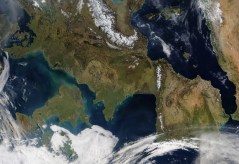What Are Microplastics and How Can We Combat Their Spread?
Microplastics have become a significant environmental issue, capturing global attention due to their prevalence and potential harm to ecosystems and human health. In this article, we’ll explore what microplastics are, how they enter our environment, and effective strategies we can employ to combat their spread.
Understanding Microplastics
Microplastics are tiny plastic particles measuring less than 5 millimeters in diameter. They originate from various sources, including the breakdown of larger plastic debris, such as bottles or bags, and from products like cosmetics and synthetic fabrics that release microfibers during washing. These particles are too small to be filtered out by standard wastewater treatment processes, leading them to infiltrate rivers, oceans, and soil.
Sources of Microplastic Pollution
The main sources of microplastic pollution include primary microplastics (manufactured small particles used in products) and secondary microplastics (fragments that result from the degradation of larger plastic items). Common household items such as exfoliating scrubs or certain laundry detergents can contribute significantly to this problem by releasing microbeads or fibers into wastewater systems. Additionally, tire wear on roads creates tiny particles that wash into waterways during rainfall.
Impact on Ecosystems
Microplastics pose a severe threat to marine life as they can be ingested by a variety of organisms—from fish to plankton—leading to health issues within those species. This not only affects individual animals but also disrupts entire food chains. Furthermore, toxic chemicals often adhere to these plastics, which can accumulate in the bodies of animals that consume them. Ultimately, these toxins may transfer up the food chain toward humans who consume seafood contaminated with microplastics.
Strategies for Combating Microplastic Pollution
Combating the spread of microplastics requires coordinated efforts at multiple levels—from individuals making mindful choices about their consumption habits to policymakers implementing regulations on plastic production and waste management. Some effective strategies include reducing single-use plastics, opting for natural fiber clothing alternatives over synthetic ones, using filters when washing clothes (to catch microfibers), and participating in local clean-up initiatives.
Advocacy for Change
Finally, raising awareness about the dangers posed by microplastics is crucial for driving change. Engage with communities through education programs about reducing plastic usage and encourage local governments to enact policies addressing plastic waste management. Supporting organizations dedicated to ocean cleaning efforts can amplify individual actions towards creating a cleaner environment free from harmful pollutants like microplastics.
While tackling the issue of microplastic pollution may seem daunting given its scale and complexity, every step taken contributes towards a healthier planet. By understanding what microplastics are and taking proactive measures against their proliferation, we equip ourselves with the tools needed for positive change.
This text was generated using a large language model, and select text has been reviewed and moderated for purposes such as readability.






